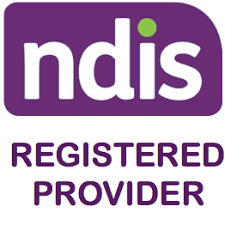Apps
Defining hitting behaviour
Hitting is the act of using the hand or arm with an open or closed fist to contact one’s own body or another person. Hitting can vary in terms of the force that is used such that the contact makes a sound or causes injury that can range in severity from a minor injury (e.g. mark) to major injury (e.g. concussion) (Dalphonse, 2020).
Hitting behaviour as a part of normal development
Almost all children have displayed hitting behaviour in the early stages of development (up to five years of age). A child may hit a child who has taken their toy, hit a peer who is too close or hit a peer who is making fun of them. When children mature, they develop appropriate ways of communicating their needs, interacting with others, problem-solving, coping with their emotions and controlling their behaviours, which helps them outgrow the hitting behaviour.
Hitting behaviour of concern
Hitting behaviour becomes a concern when the following occur:
- the frequency (i.e. how often a child exhibits hitting behaviour) becomes excessive,
- the duration (i.e. how long each incident of the hitting behaviour lasts) becomes excessive,
- the intensity (i.e. the strength of the hitting behaviour) escalates from minor behaviours into extreme behaviours, and
- the hitting behaviour negatively impacts the child’s participation in activities, interaction with others, their day-to-day functioning and development.
Impact of hitting behaviour
When hitting becomes persistent and chronic, it can cause negative consequences for the child and everyone else involved. The person who gets hit has a painful experience that can leave them feeling worried that it might happen again, while the parents of the child who was hit can be angry that their child got hurt and be anxious about their child’s safety. The parents of the child who hits may feel annoyed at their child and anxious about how others will treat their child. The child may get labelled as ‘the hitter’ and others may become wary of the child. Parents have to adapt their life to avoid triggering the child and limit the child’s access to the community due to the child’s behaviour.
The climate of the context (e.g. childcare, early childhood, primary and secondary school, disability support and youth services) can also change dramatically. A considerable amount of time and energy can be spent on the child showing the hitting behaviour, which can have a deleterious effect on the quality of the learning experience for all the children. Research consistently shows that managing behaviour is linked to staff experiencing high levels of stress, burnout, and job dissatisfaction.
Example
Ms Jones is having trouble with 14-year-old Jason, a child in her class. He often hits other children in the class in response to what appear to be seemingly minor, everyday inconveniences and stressors. For example, hitting a child who sat in his seat accidentally, someone bumping into him accidentally or someone teasing him. Ms Jones tries to explain why his behaviour is wrong, but Jason feels Ms Jones doesn’t like him so shuts down the conversation. When Ms Jones calls Jason’s parents into the classroom to discuss his behaviour, his parents express that they are at a loss as well on how to support him. They explain how they walk on eggshells around him at home and let him do whatever he wants to so that they don’t anger him and he stays calm.
Hence, hitting affects everyone involved and the child who is hitting requires necessary help to learn positive ways of behaving and managing their emotions.
Positive behaviour support resources for hitting behaviour

Positive Behaviour Support (PBS) focuses on evidence-based strategies and person-centred supports that address the needs of the individual and the underlying causes of behaviours of concern, to enhance the quality of life for both the individual and those that support them.
PBS recognises that there is no single cause for hitting behaviour. It is a complex behaviour that is a product of the interaction between multiple factors contributing to its development and persistence.
Hitting behaviour is like the tip of the iceberg so it is essential to look beneath the surface to work out the why before we can address the problem. Behaviour Help resources are at hand.
Get Started with Behaviour Help App
Assess-manage-prevent behaviours of concern efficiently and effectively with the Behaviour Help App.
Download this free PDF guide
The forms contained in this pdf booklet are from the H for Hitting: Positive Behaviour Support guide that can be used as part of the process of developing a PBS plan.
Get Started with Behaviour Help App
Assess-manage-prevent behaviours of concern efficiently and effectively with the Behaviour Help App.

